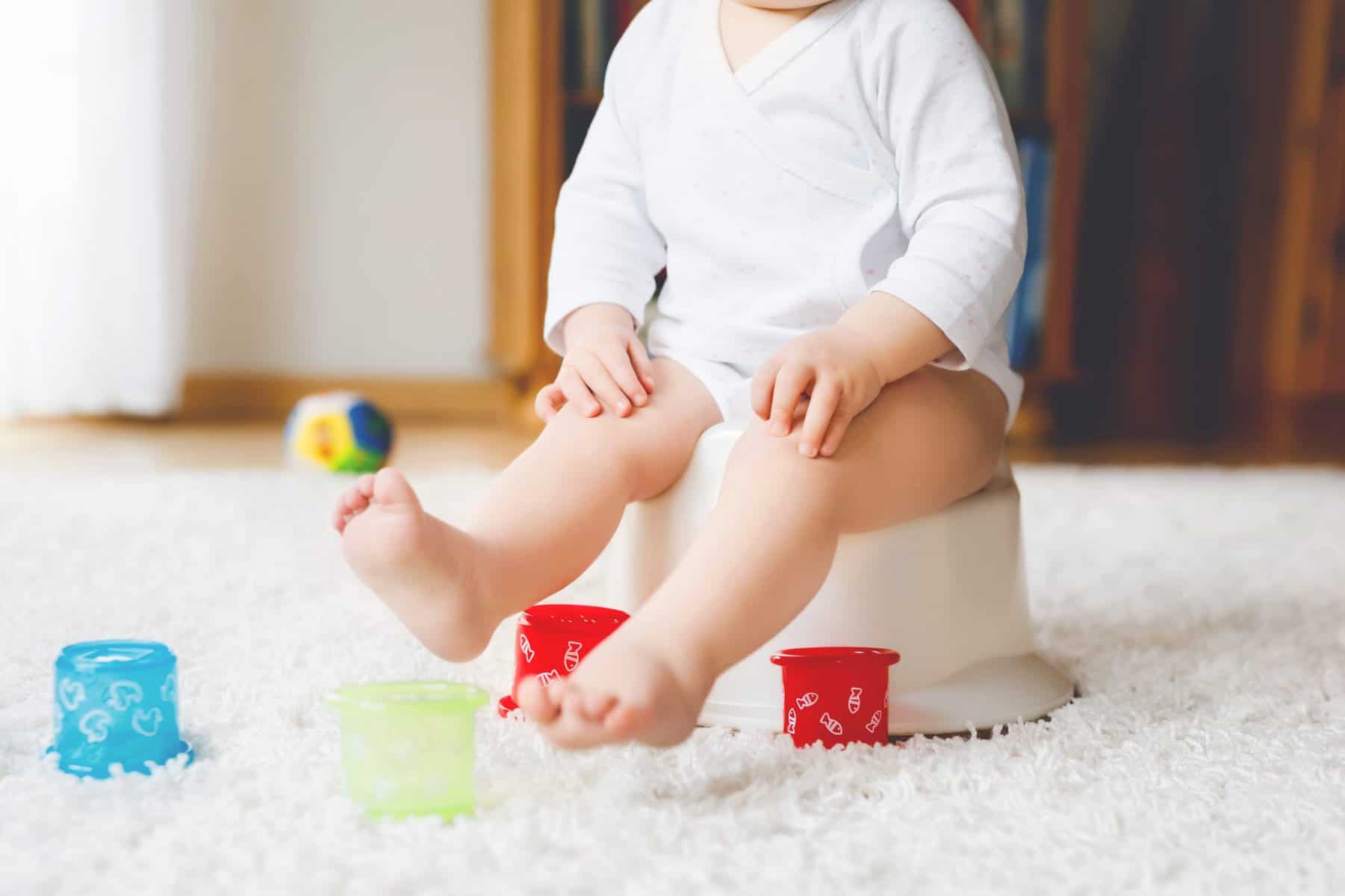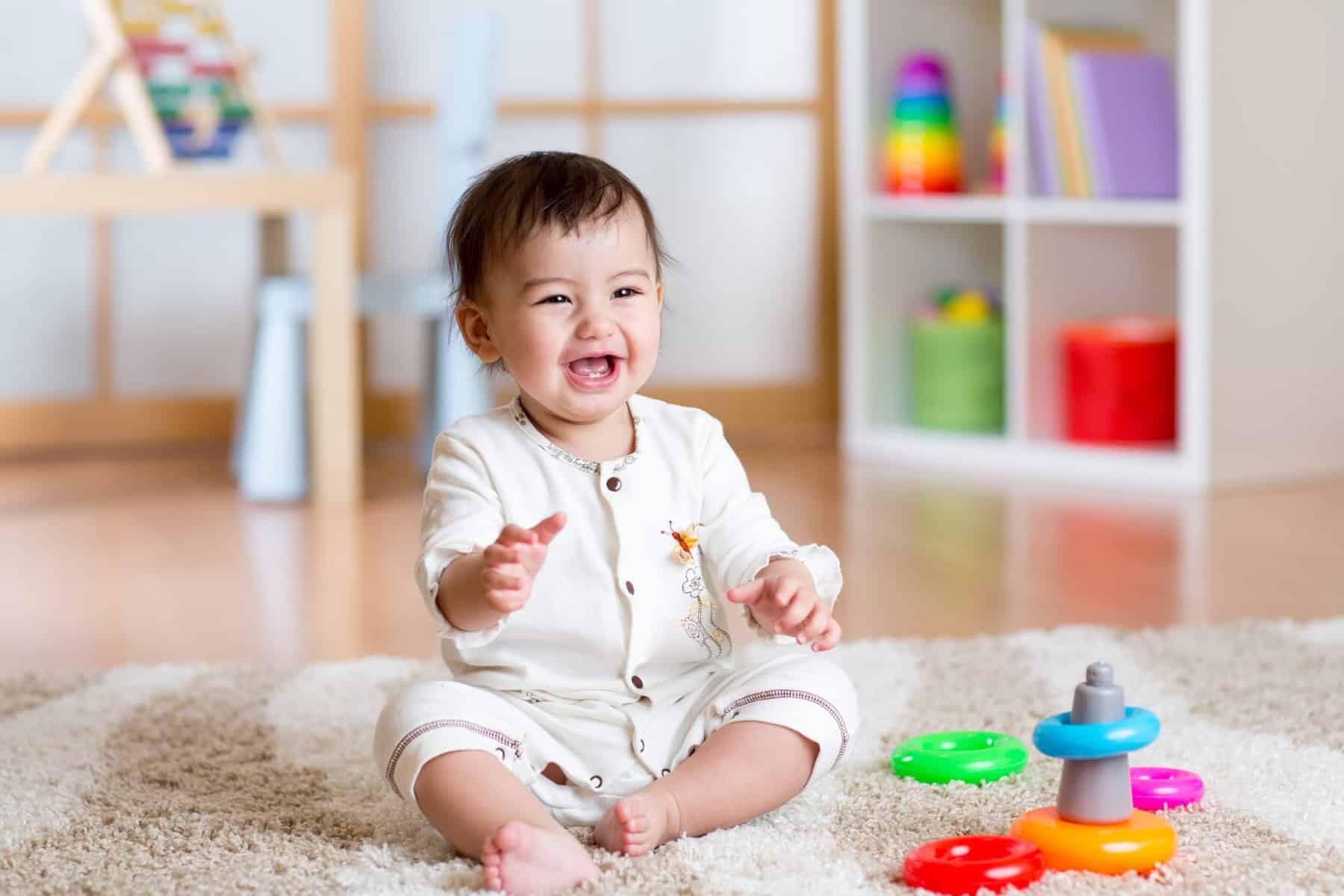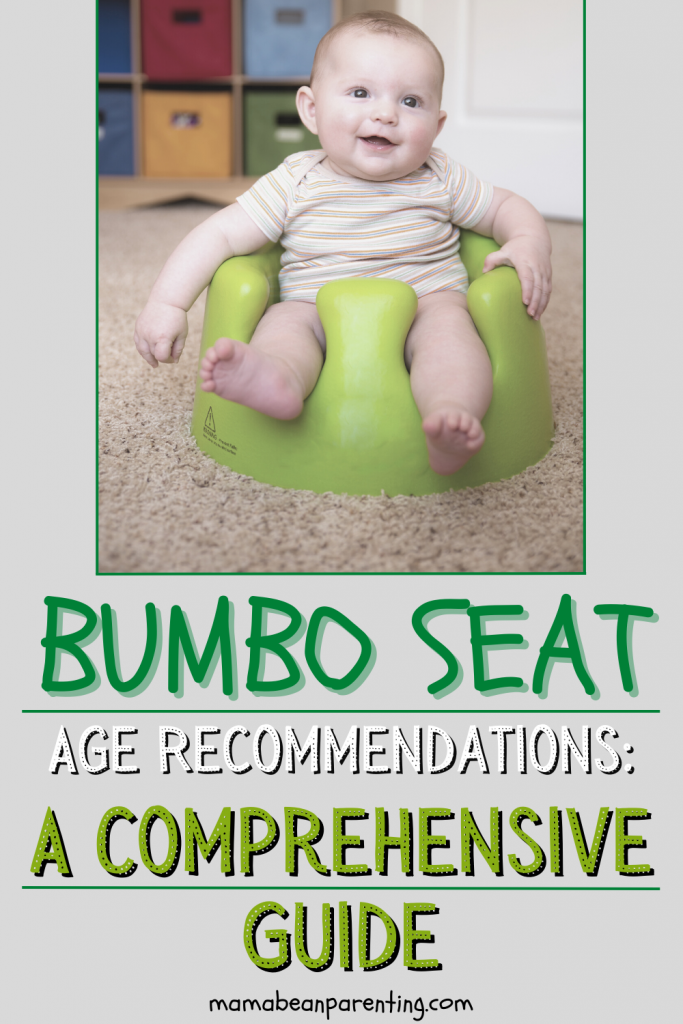A bumbo seat is a one-piece seat specifically engineered to support young babies by helping them learn how to sit upright. However, as a responsible parent, you surely have questions and safety concerns, most of which focus on the appropriate bumbo seat age.
Besides, how effective is a bumbo seat anyway – if at all?
Before using a bumbo seat to support your baby’s development, the most important thing to consider is your baby’s age. In this article, we will explore not only the ideal bumbo seat age, but the significance of safety precautions and developmental milestones.
After all, that’s what every parent needs to know. Are bumbo seats safe? Before we can draw the bottom line, we have a variety of factors to consider.
Meanwhile, it’s your job as a responsible parent to educate yourself on the topic before using any parenting tools.
We’re here to make it easy for you to familiarize yourself with the purpose of bumbo seats in your baby’s life. While the benefits may be many, understanding the appropriate bumbo seat age is crucial in order to provide a safe developmental tool for your baby.
Physical Milestones & Age Recommendations

The first dilemma that comes to mind is whether or not your baby’s ready to use a bumbo seat. Consider two factors in order to make an informed decision. First, consider your baby’s physical development. Second, make sure to follow age recommendations.
What kind of physical milestones does your baby need to reach before they can safely use a bumbo seat? First of all, your baby needs to develop an ability to support not only their head, but their neck and trunk, as well. For some babies, this takes longer than usual.
Every baby develops at their own pace. It’s important for parents to exercise patience.
Babies usually develop adequate head, neck and trunk control at around four months. Until then, it can be considered unsafe for babies to sit in a bumbo seat.
While the official recommendations usually say three months, we advise waiting an extra month before use.
Even though the bumbo seat helps your baby sit upright, they need to have the strength and the balance necessary to support their head, neck and trunk without assistance.
Babies usually develop the ability to sit upright without their parents’ help or the use of a bumbo seat somewhere around eight to ten months.
However, the purpose of a bumbo seat is to accelerate the process and to help your little one master this ability notably sooner.
If not sooner, a bumbo seat ensures that your baby reaches this milestone without delay.
Well, that’s at least how the manufacturers advertise them.
Truthfully, it’s important to note a lack of scientific evidence behind these claims.
Understanding the appropriate bumbo seat age is not only about observing your baby’s physical development but about following safety guidelines and the written instructions provided by the manufacturer.
Never gloss over the instructions or read them in a hurry.
As always, prioritize your baby’s safety.
Following an online guide such as this one certainly has uses, but bumbo seats vary in design from manufacturer to manufacturer. The purpose remains the same, but it’s the finest of details and margins that you have to consider in order to keep your baby safe.
Every manual covers not only the ideal bumbo seat age, but weight restrictions, key points in regards to extended use and extra safety tips. While this may not be the case for every bumbo seat product, in general the recommended baby weight limit is 20 pounds.
But, are bumbo seats safe for extended use? Again, the guidelines may vary from product to product, but our research into the topic has found that it’s generally advised for parents not to allow their babies to sit in the bumbo seat for any period longer than 15 minutes.
Finally, with all these safety tips in mind, the last thing to take into account is, of course, the ideal bumbo seat age. Naturally, the safety manual provided by the manufacturer lists the age recommendations. Make sure to follow these recommendations without question.
Most bumbo seats are safe for babies between 3 to 12 months of age.
You want to maximize your baby’s safety while they use the bumbo seat.
If your baby doesn’t meet certain physical milestones and developments, or if you’re unsure about safety instructions, then you may want to avoid using a bumbo seat. Otherwise, you’re putting your baby in harm’s way, which may result in injuries.
All in all, following these recommendations, can help you make the most of your bumbo seat product and provide a fun and enjoyable experience for your baby, and ensure a stress-free experience for you as a parent that’s always worrying about safety concerns.
So, are bumbo seats safe?
Yes, bumbo seats can be safe to use, but only under the conditions that your baby meets all the developmental milestones, weight and size requirements in accordance with the instructions provided and age recommendations.
Essential Safety Precautions & Measures

Assuming that your infant is ready to explore the wonders of bumbo seats by meeting all the necessary physical milestones and age recommendations – here’s everything you need to know about safety precautions. As a responsible parent, this takes top priority.
1. Supervise your baby at all times.
Using a bumbo seat is a fun, convenient and engaging way for babies to learn how to sit upright, but it demands your constant presence and supervision. By being present and observant, you minimize the chances of accidents and injuries in a responsive way.
The most common injury includes the bumbo seat tipping over.
So, never leave your baby unattended. In case you have to turn your attention elsewhere, remove your baby from the seat and place them in a safe environment. A baby sitting in a bumbo chair should always be within your arm’s reach and under your surveillance.
Before using the device, ensure that you have a distraction-free environment.
2. Place the bumbo seat on a flat surface.
A flat surface minimizes any unnecessary risk and helps your baby enjoy a wobble-free seated position. It goes without saying that you shouldn’t position this seating solution on a higher, more elevated surface such as a table, which is generally considered unsafe.
Placing it higher increases the risk of injury and falling. After all, elevated surfaces simply lack the stability of placing a bumbo seat on a floor – and that’s basic science. Since their center of gravity is higher, it makes it easier for your baby’s seat to tip and fall over.
Since the seat is extremely unbalanced on an elevated surface, any kind of movements can cause an accident. As such, minimize the risks by placing the seat on an even surface.
3. Avoid using the seat for extended periods of time.
Limit the use of this seating option to 15 minutes tops. As mentioned above, using the bumbo seat for prolonged periods of time can, in fact, have a negative effect on your baby’s physical development. So, set a timer and don’t leave your baby unattended.
The ideal bumbo seat age has nothing to do with time of use. Keep that in mind. This seated position negates any possibility for your infant to interact with the world in a natural way. It’s a fixed position that helps your baby sit upright, but it has limitations.
For example, prolonged use can lead to muscle weakening.
Some babies tend to react negatively to a fixed seated position. So, watch for signs of discomfort. If your baby’s starting to fuss or cry, then you’ve already passed the limit.
Mind the instructions. Does your baby have adequate head control? Can they hold their head? All these physical developments and milestones make it easier for your baby to use the bumbo seat, but it’s important that you limit the use of a bumbo seat to 15 minutes.
In addition to this seating option, you want to ensure that your little one benefits from other natural activities, such as tummy time and creeping. This allows your baby to enjoy a sense of freedom alongside the many benefits of using a bumbo seat safely and smartly.
4. Make sure that your baby fits safely and securely.
A bumbo seat has to fit your baby properly. Depending on your baby’s proportions, a bumbo floor seat has to keep your baby secure and comfy. Too much wiggle-space increases risk of injury. You have to ensure that you pick the right size for your baby.
Take advantage of the seat’s safety straps and harnesses in order to make sure that your baby enjoys a comfortable and secure sitting position. Lessen the risks by following bumbo seat age recommendations and checking the size and the weight restrictions.
Don’t forget to fasten the straps. Make sure that they’re properly secured, tightened, but not to the point that they make your baby uncomfortable or restrict their breathing.
An infant placed safely in a bumbo seat implies zero loose areas. That means that the chances of your baby falling out are null if you’ve followed the necessary precautions.
5. Don’t overdo it.
The recommended bumbo seat age is 3 to 12 months. However, during this time babies need proper gross motor activities. While the bumbo seat provides convenience, it’s important to note a lack of scientific research and evidence in regards to its efficiency.
Overdoing it may even lead to delayed gross motor skills.
All things considered, this sitting option likely won’t teach your child how to sit upright. This is something that all babies learn and develop naturally with structured age-appropriate playtime activities, such as tummy time, crawling, reaching and grasping.
To inspire you, here’s a list of safe activities for a 3 month old baby.
Besides, overusing the bumbo seat can lead to negative physical consequences, such as a rounded back, poor posture and weakened muscles. That’s why it’s crucial for parents to use the bumbo seat as intended by following all the necessary safety tips and measures.
Make sure to provide plenty of physical activities for your baby to explore their strengths and movements outside of the seat. As with all things, it all comes down to balance.
Are bumbo seats safe for young babies? Certainly, but they’re not and should not become a substitute for well-established playtime activities that focus on your baby’s development.
Exploring Alternative Sitting Options

While the bumbo floor seat is advertised as a fully functional tool to help your baby learn how to sit upright – they don’t exactly need it. Your baby is going to learn to sit upright by way of natural development regardless of whether or not you use this sitting option.
Still, the benefits of using bumbo seats range from providing a secure and stable place for your little one to sit, to promoting head and neck control development and support.
After you have familiarized yourself with the appropriate bumbo seat age, physical milestones, safety precautions and potential risks – it’s time to explore alternatives.
After all, there’s so many different ways to help a baby sit upright unassisted.
When you start exploring the world of sitting options and positions for young babies, you quickly discover that it’s quite extensive. Floor seats come in all shapes and sizes, but the one similarity that they share is the fact that they’re all designed to promote growth.
However, all baby seats demand your presence and surveillance. Not only that, they demand that you do your research well and ensure that your baby’s ready for a new seat.
So, before you make up your mind, let’s explore the alternatives.
1. Explore a fun playtime with a baby bouncer.
One alternative to bumbo seats that has been gaining popularity is a baby bouncer. This option provides support for your baby’s entire body while also prioritizing their safety.
The baby bouncer is designed to bounce with your baby’s movement, which can be fun or relaxing, depending on how it’s used. The gentle bouncing can have a soothing effect, while more stimulating activities help your baby develop their muscles and movements.
Unlike the bumbo seat age, baby bouncers are most suited for babies from 3 to 6 months.
You likely won’t be using it for prolonged periods of time.
Aside from the bouncing motion, the most common features of an infant bouncer include adjustable incline options, various entertainment features that range from vibrations to music, portability, ease of access and use, and additional safety features and measures.
Just like the bumbo seat – a baby bouncer is not a substitute to your surveillance. When using an infant bouncer, always be present, observant and responsive.
2. Discover the advantages of a baby activity center.
The ideal bumbo seat age indicates that it’s safe to use at around 3 to 4 months. On the other hand, a baby activity center exercises more caution, seeing as many manufacturers list that their baby activity center should be used somewhere between 4 to 9 months.
This depends on various factors, such as your baby’s ability to sit upright.
So, what’s the deal with baby activity centers? While the bumbo seat is stationary and fixed, a baby activity center provides a 360-degree rotating seat, which allows your little one to explore and interact the world around them by reaching for toys and items.
A baby activity center is perfect for babies that love playtime and activities, since they usually come with extra toys and feature that focus on play, exploration and growth.
Compared to bumbo seats, it’s not only the bumbo seat age that’s different from a baby activity center. In fact, the key difference lies in the lack of engaging and stimulating activities of a bumbo seat. On top of that, a baby activity center is way more adjustable.
The disadvantage of the activity center, however, lies in its size. As a result, it’s less portable and requires more space for it to be utilized properly and safely. Just like the bumbo floor seat, a baby activity center requires your constant parental supervision.
3. Soothe and entertain your little one with a baby swing.
As opposed to the recommended bumbo seat age, baby swings are safe to use from birth up until 6 to 9 months. So, it’s something that you will work to transition out of sooner.
The purpose behind the baby swing is to rock your baby gently. The swing, well, swings back and forth in a variety of ways, depending on the product. They come in all shapes and sizes, from traditional baby swings to more modern, feature-rich alternatives.
In contrast to the bumbo seat option, a baby swing provides a more dynamic sitting position, which can have either a stimulating or a relaxing effect. However, the bumbo seat certainly provides more support for your baby’s developing trunk and head control.
Depending on the product in question, the features vary. For example, some infant swings include adjustable recline positions, extra features such as vibrations and sounds and even toys that encourage your baby to interact and play with the world around them safely.
So, Do Bumbo Seats Actually Help?

The short answer is: yes and no.
Are bumbo seats safe?
Yes, but is that good enough to warrant the risks? You see, using a bumbo floor seat is advertised as an efficient way to help babies learn how to sit. While there may be some merit to this idea, your baby doesn’t need a bumbo seat to sit upright.
In fact, the key feature that may be of interest to you is likely to be convenience. While arguably they won’t help your kid learn how to sit, it helps free your hands now and then.
If you’ve carefully analyzed the risks, read the instructions, understood appropriate bumbo seat age, considered the alternatives, and still decided to opt for a bumbo seat – remember that using this sitting option is not a replacement for age-appropriate physical activities.
After all, a baby sitting in any kind of seat is not actively improving their strength and flexibility. That’s why you have to include essential activities – and you likely already have – such as tummy time and floor time in order to help your baby develop properly.
Technically, yes, there are certain positive benefits to using a bumbo seat. For example, it provides sensory stimulation, seeing as babies sitting upright have a better view and, therefore, a better cognitive perception and experience of their immediate surroundings.
An argument can also be made that babies sitting upright for short periods of time develop strength in their neck and trunk muscles, which later on inevitably helps them learn how to crawl and eventually walk. Nevertheless, babies can learn these things without a seat.
So, what’s the point of a bumbo floor seat? Well, for parents it comes down to convenience, since securing their baby in a seat allows for a hands-free approach.
Whatever positive and miraculous features and benefits are advertised – take it with a grain of salt, since there’s a notable lack of scientific evidence behind its efficiency.
Let’s break it down, shall we?
For babies to learn to sit upright, they need head control, stronger muscles, spatial awareness and physical development. To help your baby learn how to sit upright, all you have to do in practice is provide safe and efficient physical activities and opportunities.
From holding your baby, carrying your baby, making sure that your little one gets enough tummy time and floor time, sitting them on your lap, paying attention to your baby’s cues and trusting them to be independent – all of this works to promote physical development.
Propping your child with a baby sitting device such as the bumbo seat really has no notable improvement to their upright posture; in fact, using it too much and relying on it to teach your child how to sit up properly can, in fact, lead to developmental delays.
It’s safe, but you have to take it for what it’s worth and make sure that you’re informed about all the risks and precautions, especially the recommended bumbo seat age.
In Conclusion

Having explored physical milestones and developments necessary for safe use, the recommended bumbo seat age, essential safety precautions and measures for parents to keep in mind, as well as alternative options – you now know everything there is to know.
Suppose you have any additional questions and safety concerns that may perhaps be specific to your baby. In that case, the smartest choice is to consult with your pediatrician in order to make an informed decision about the benefits and the drawbacks of using a bumbo floor seat.
Helping your baby learn to sit upright isn’t just about knowing the appropriate bumbo seat age. The developmental process involves so much more than that – most of which occurs outside of the actual seat. Still, it’s a neat option for parents in need of convenience.
If you’re going to use a bumbo seat, be realistic with your expectations and don’t let it decrease the frequency of actual physical developmental exercises that your baby needs.
Most of all, make sure that your baby enjoys a safe sitting position by following our key guidelines and taking your time to go through the instructions provided very carefully.

Mother of three and a primary school teacher. I’ve always loved being around children and helping them, so I chose my path as a teacher. It is sometimes hectic with three children, but I am 100 percent into it and wouldn’t change it for anything in the world.


